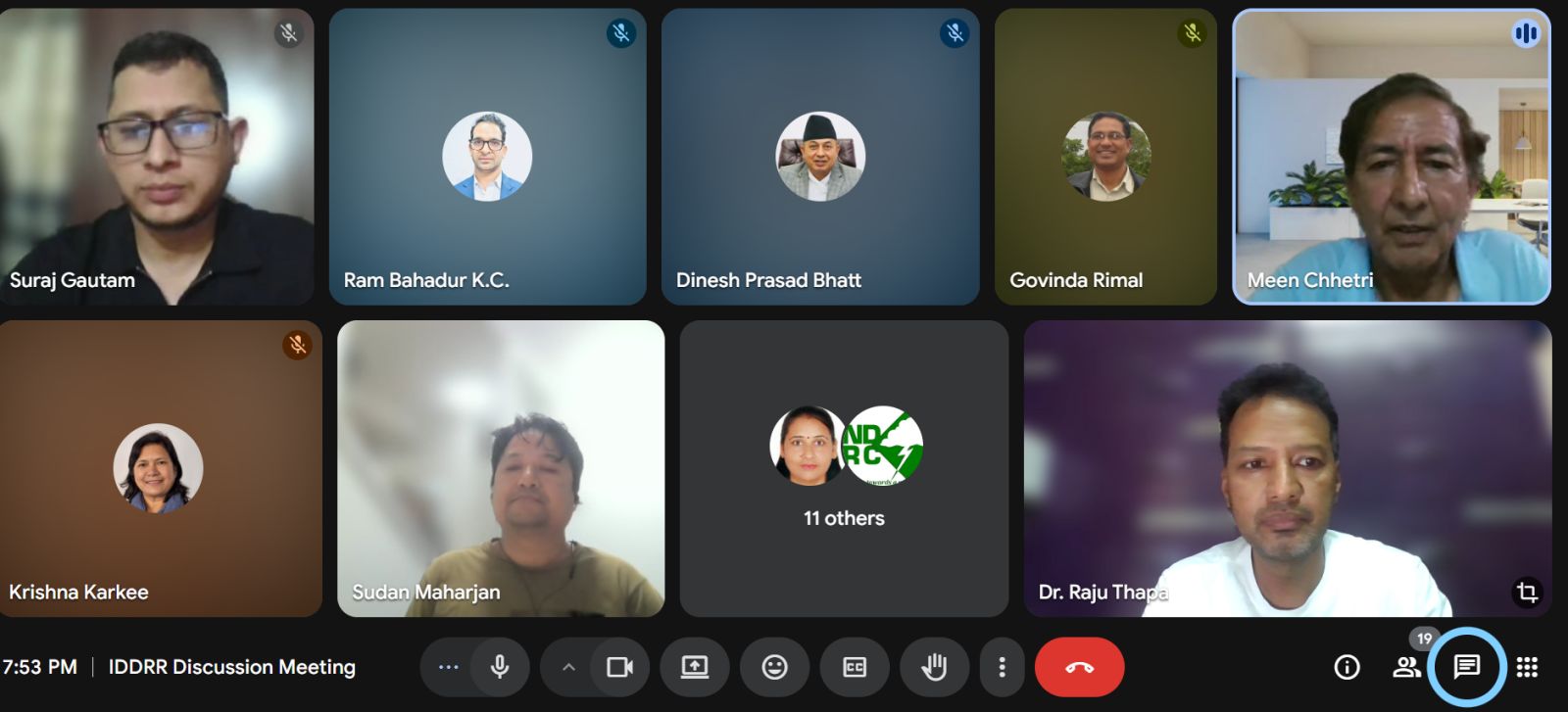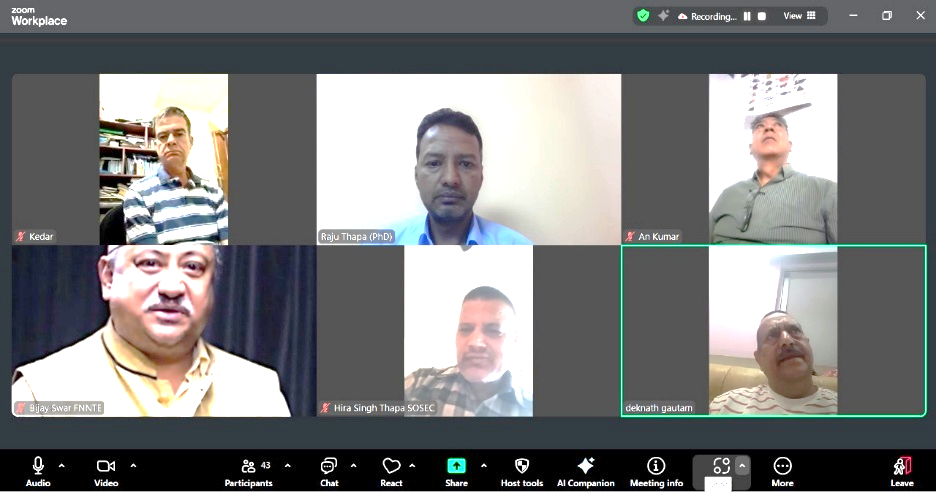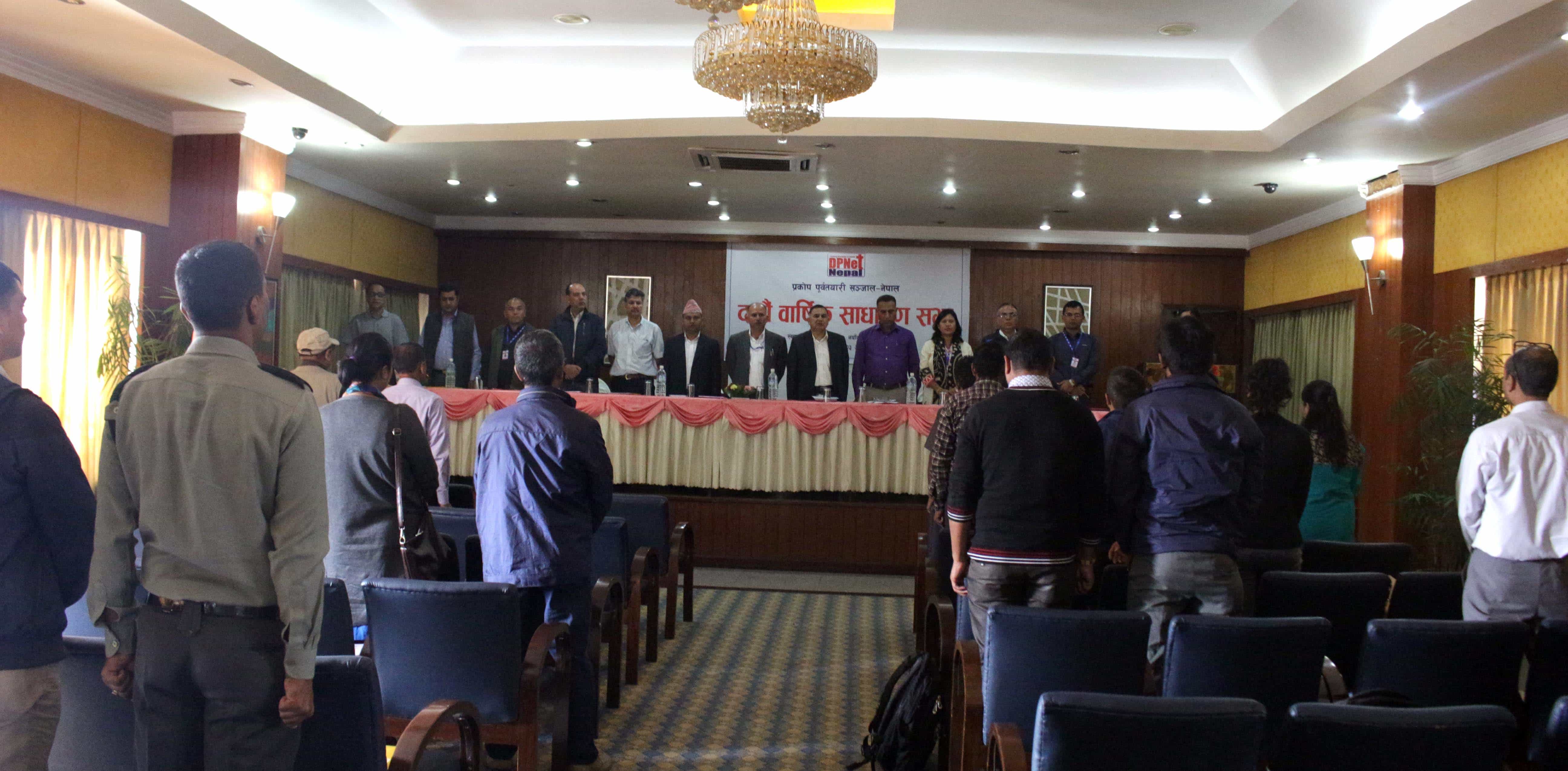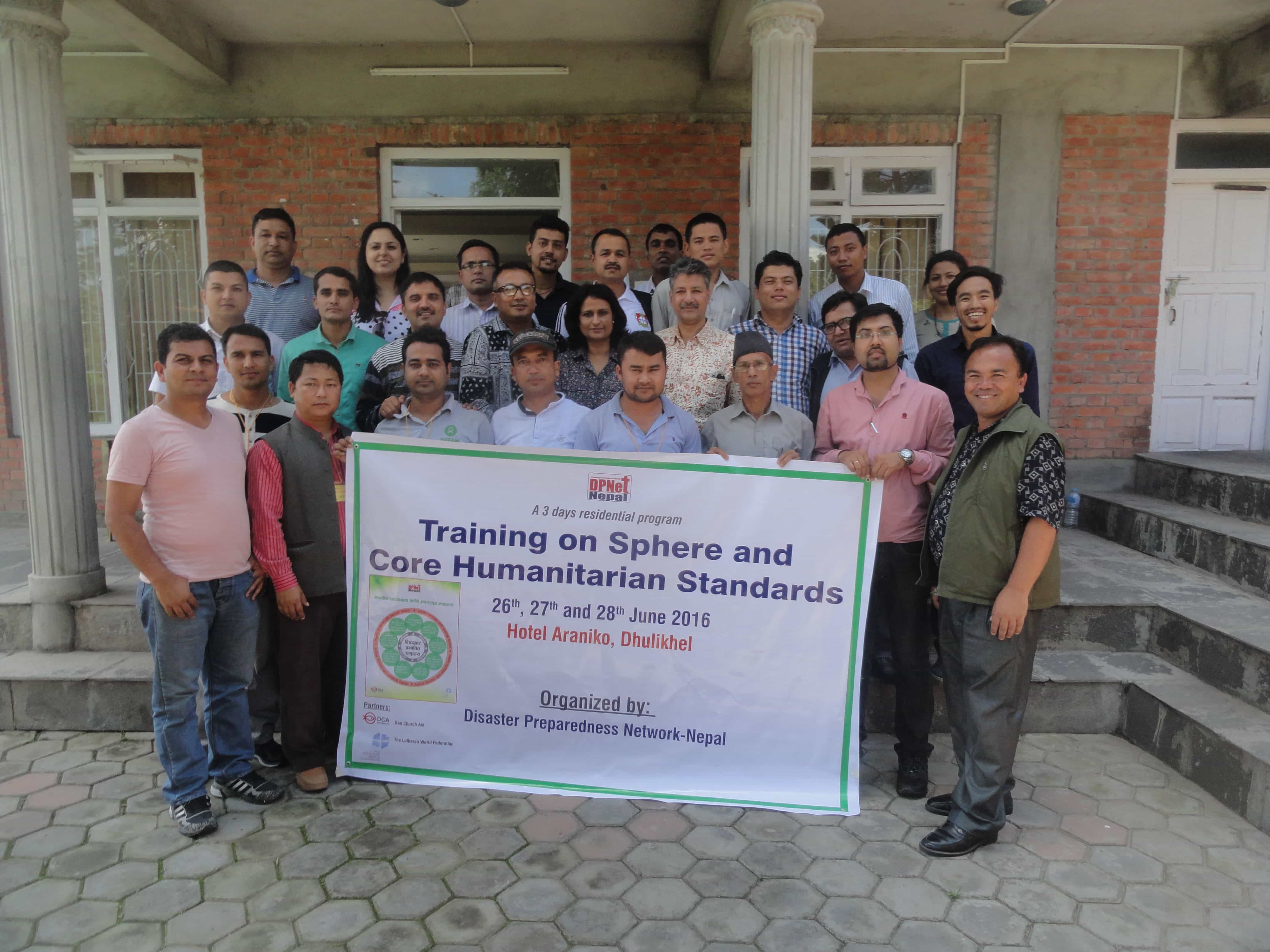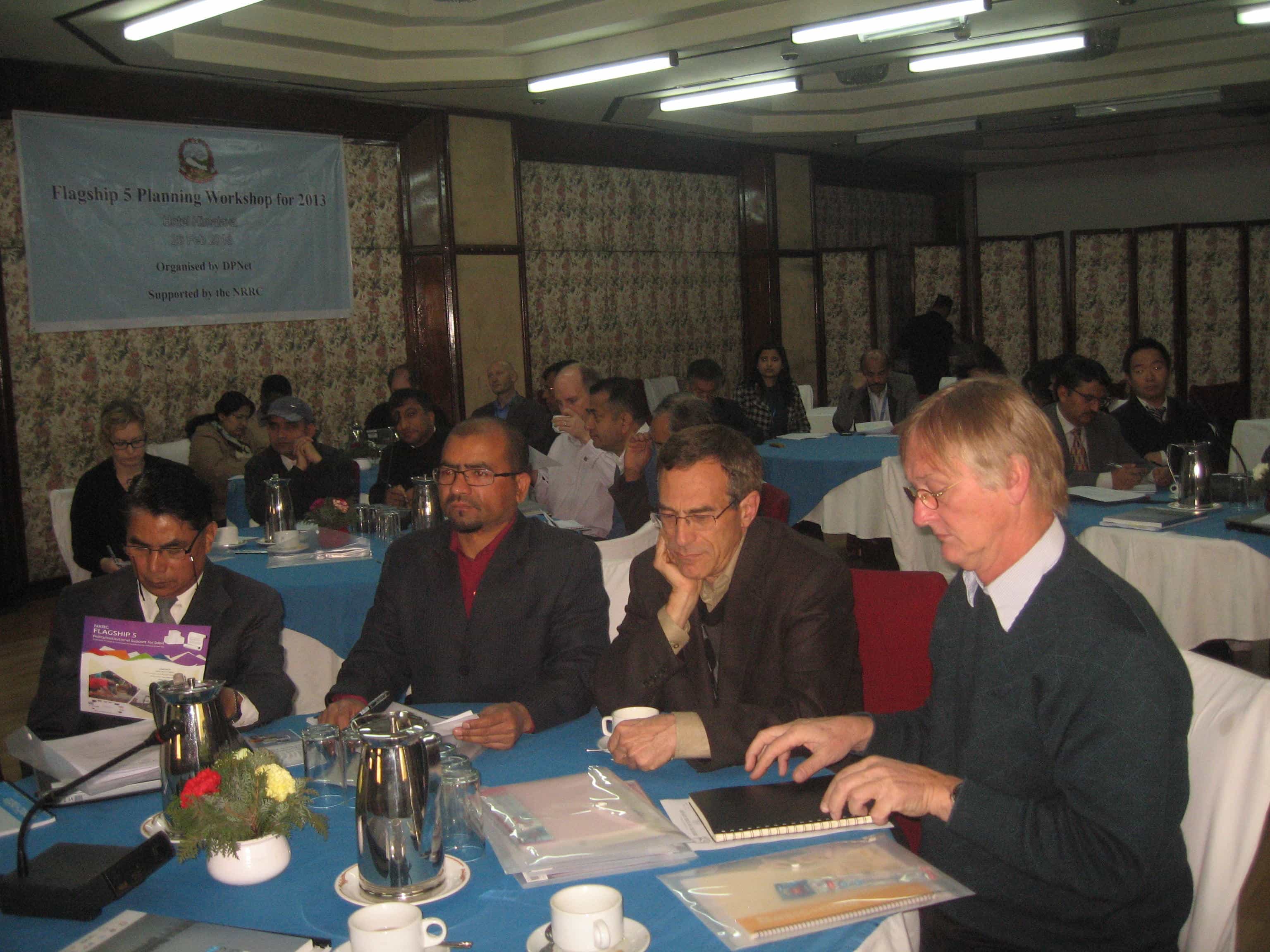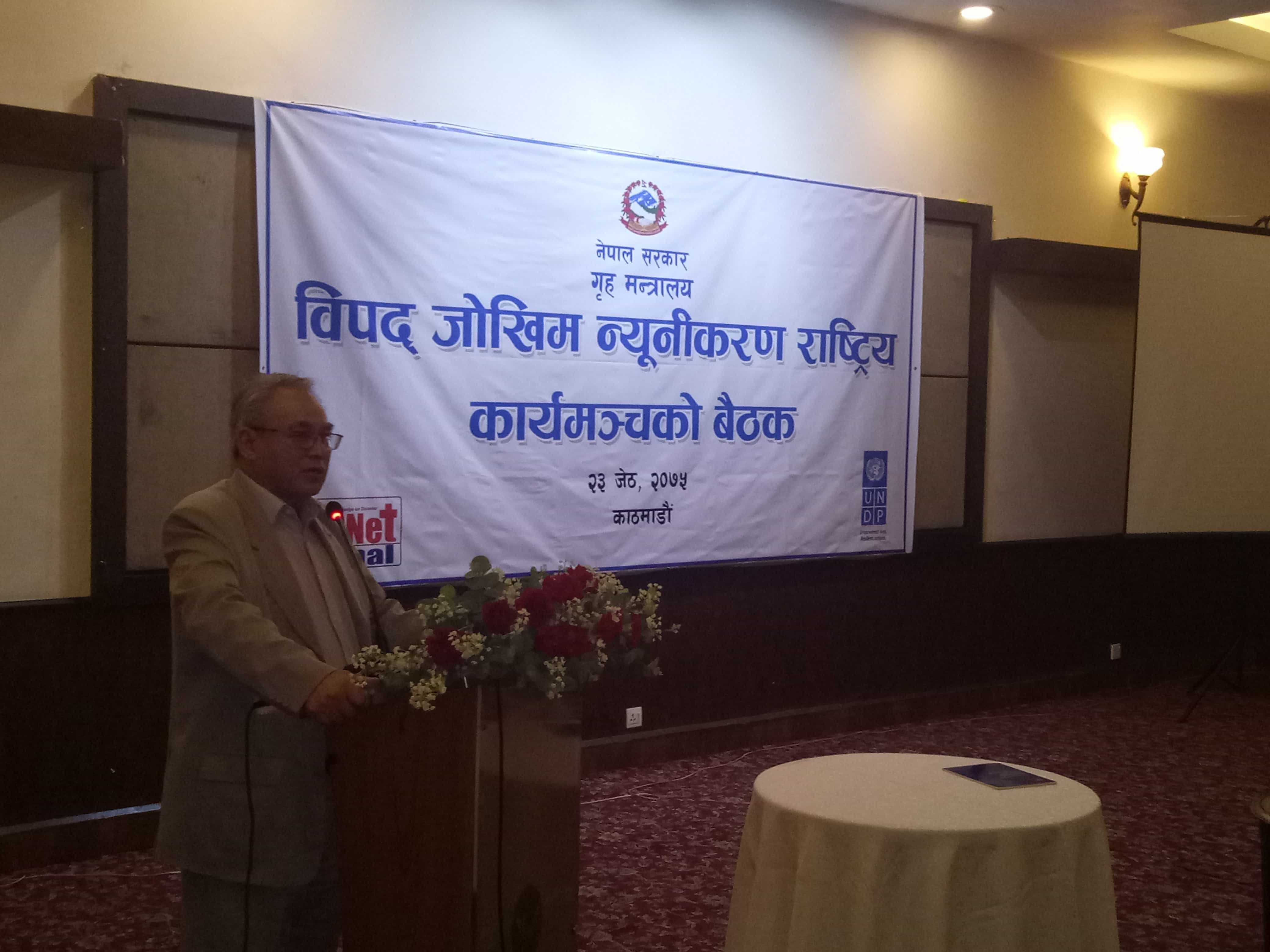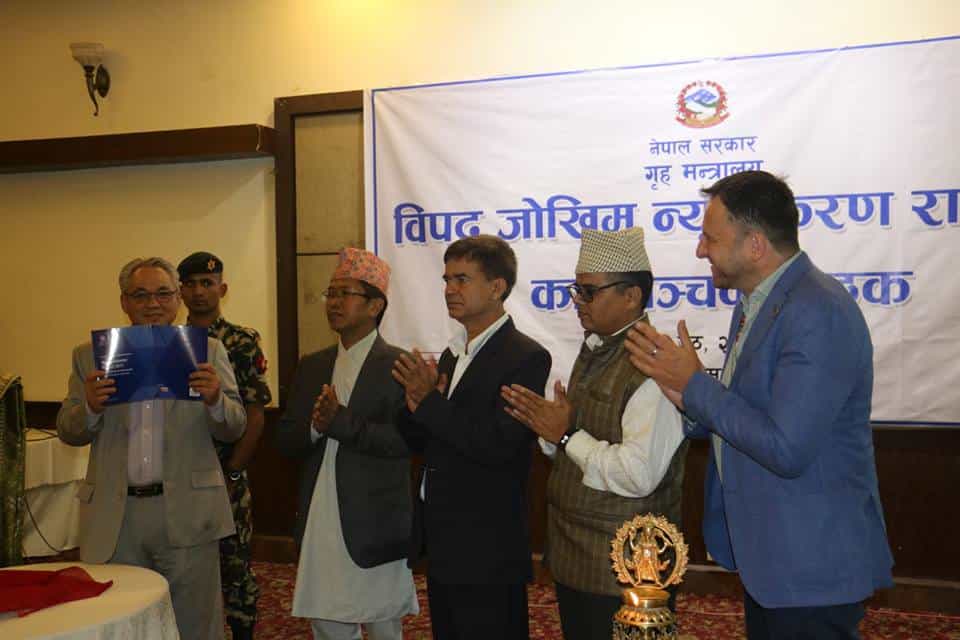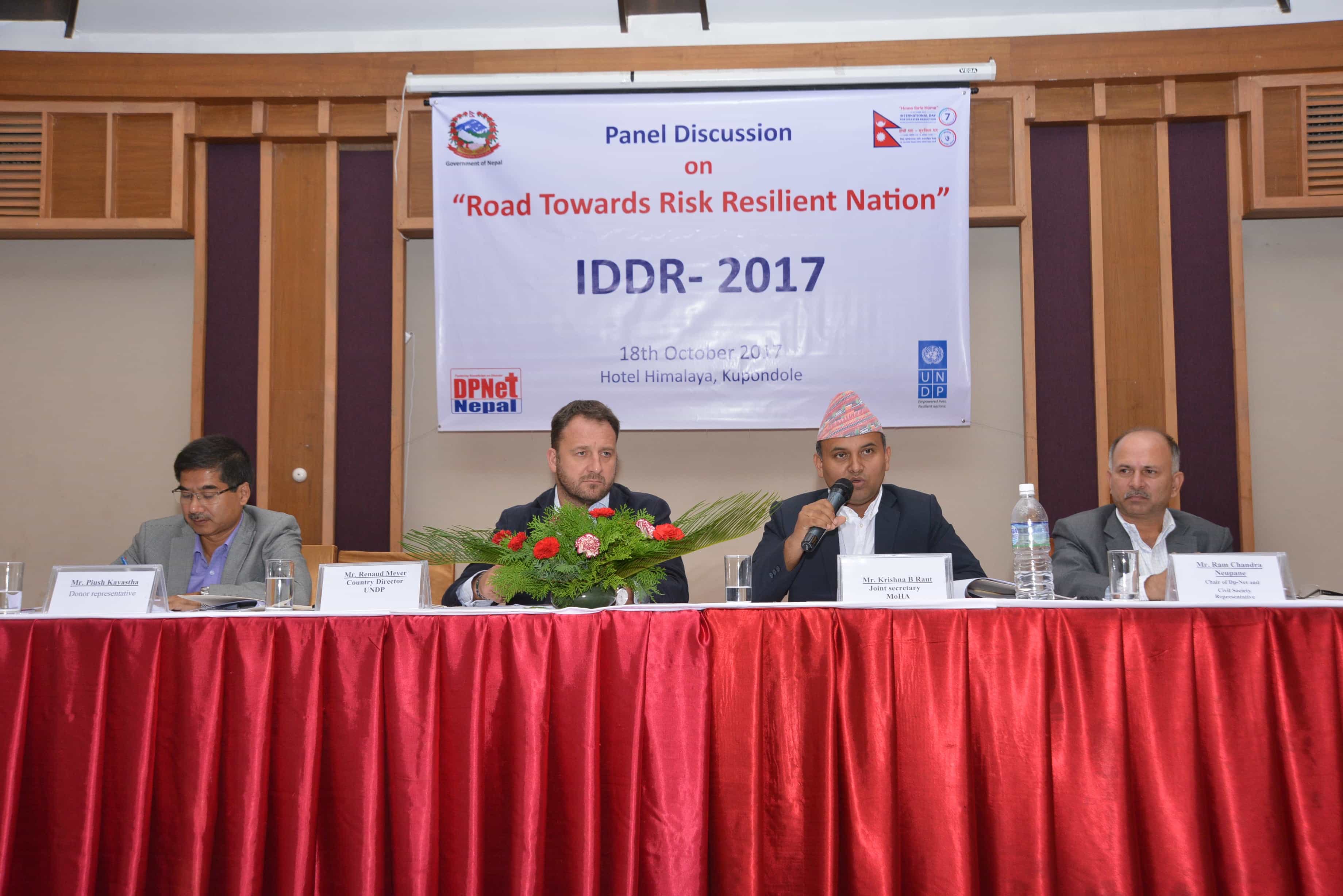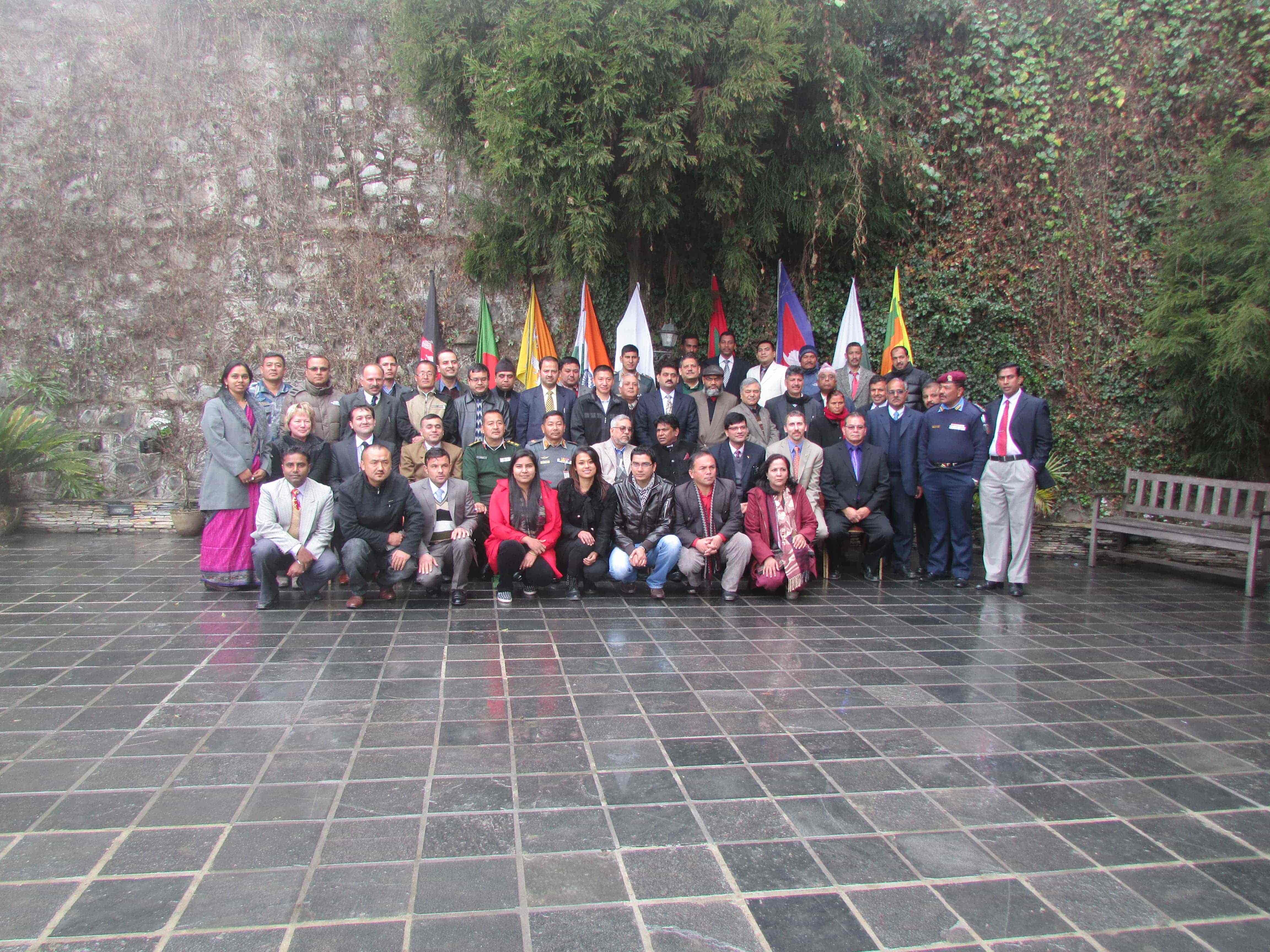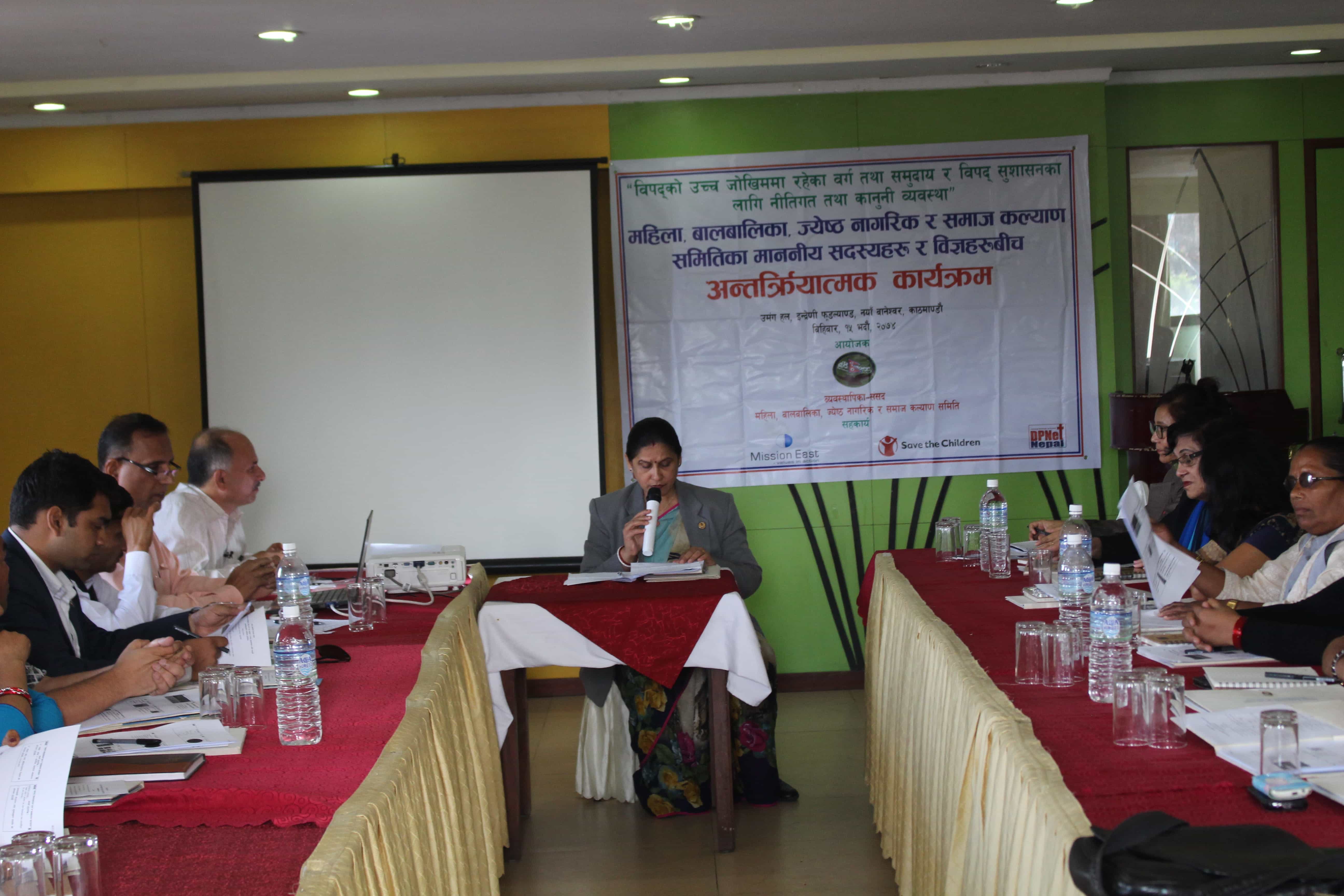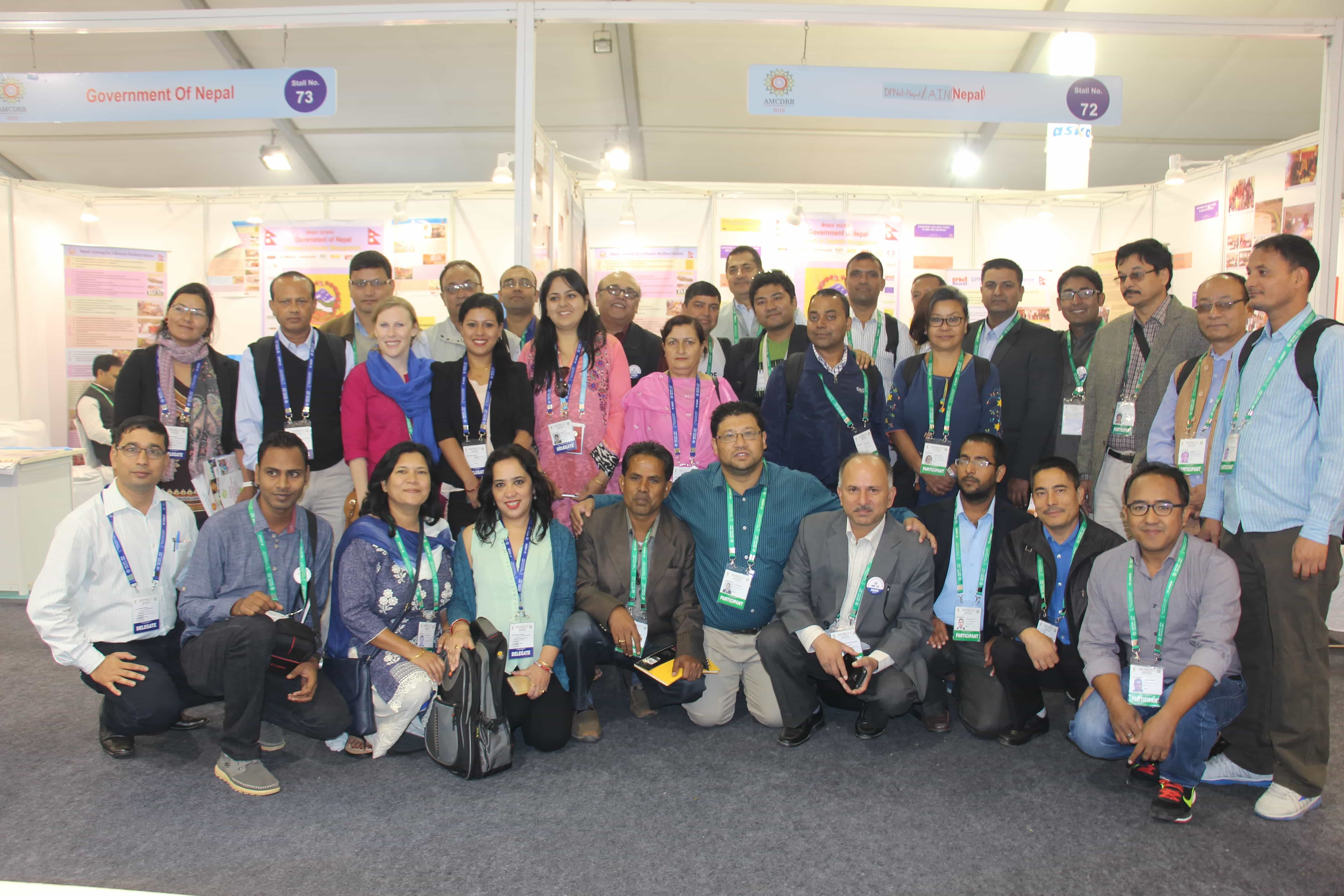NPDRR and Humanitarian Partners call for unified cross sector Disaster Preparedness and Response

Kathmandu, Oct 3 – As Nepal braces for heavy rainfall coinciding with the Dashain festival from October 4 to 6, in support of DPNet, National Platform for Disaster Risk Reduction (NPDRR) organized a virtual dialogue on October 3 to discuss monsoon preparedness and response. The meeting was attended by senior officials from the Ministry of Home Affairs (MoHA), National Disaster Risk Reduction and Management Authority (NDRRMA), the Department of Hydrology and Meteorology (DHM), the Association of International NGOs Task Group on Disaster Management (AINTGDM), Social Protection Civil Society Network, Nepal (SPCSN), humanitarian agencies, and other disaster management actors. The session was facilitated by Dr. Raju Thapa, NPDRR Member Secretary and Chairperson of DPNet.
During the event, Ms. Binu Maharjan, Meteorologist, Department of Hydrology and Meteorology (DHM) presented the early October rainfall outlook. According to DHM, widespread rainfall is expected across the country, with Koshi, Bagmati, Gandaki, and Lumbini provinces facing the possibility of heavy to very heavy rainfall. The forecast indicates heightened risks of floods, landslides, and inundation, particularly in vulnerable hilly and Terai regions. DHM emphasized the importance of disseminating timely early warning messages to minimize disaster impacts.
Mr. Binod Parajuli, Senior Divisional Hydrologist, DHM, stated that the weather forecast becomes more reliable in the last 24 hours, as it provides more specific information. He informed that on October 4 (Ashoj 18), there is a likelihood of heavy rainfall in some areas of Koshi, Madhesh, Bagmati, Gandaki, and Lumbini Provinces. Furthermore, on October 5 (Ashoj 19), very heavy rainfall is expected in parts of Koshi, Madhesh, Bagmati, and Gandaki Provinces, which could increase risks of floods, landslides, and waterlogging in vulnerable regions.
During the open floor discussion, Dr. Ranjan Dahal emphasized the pressing need for comprehensive disaster preparedness and enhanced community resilience throughout the region. He highlighted the vital role of early warning systems that use color-coded alerts, Yellow, Orange, and Red, to enable timely evacuations and protect vulnerable groups. Dr. Dahal called for the strengthening system to inform at least local level precisely especially in areas prone to landslides and floods, by reinforcing roads, bridges, and public buildings, while ensuring that schools and health facilities remain functional and accessible during emergencies. He also stressed the importance of expanding communication channels such as FM radio, SMS alerts, mobile apps, and community-based alert systems to reach even the most isolated households.
The discussion also featured active contributions from humanitarian agencies and other stakeholders, who shared their perspectives on monsoon preparedness and outlined the specific roles their organizations must play. The participants agreed that the current situation demands immediate attention and a unified, cross-sectoral response. They highlighted that no single entity can address disaster risks in isolation. The effective preparedness hinges on strong collaboration among government institutions, humanitarian organizations, local community groups, and broader networks. The clear communication, joint planning, and coordinated resource mobilization were identified as essential, particularly to protect lives and livelihoods during the upcoming Dashain season. It was concluded with a shared recognition that collective responsibility and prompt, coordinated action are critical to mitigating the impacts of disasters.
In his remarks, Mr. Rameshwar Dangal, Home Secretary, MoHA, stressed that together with NDRRMA and the Conflict and Disaster Management Division of MoHA are actively working on monsoon preparedness. He urged humanitarian agencies, I/NGOs, community organizations, and volunteers to extend strong support to MoHA and NDRRMA, emphasizing the need for effective coordination. He highlighted that Nepal faces dual challenges: managing natural disasters and dealing with the broader context of political volatility, citizen dissatisfaction, and ongoing security concerns. He warned that failure to address disaster impacts effectively could lead to public outrage, further fueling unrest. He reminded participants that even in stable times, delays in disaster response had caused significant setbacks in the past, and in the current tense environment, preparedness was more critical than ever.
The Home Secretary underlined three main disaster threats from the expected rainfall: floods, landslides, and inundation. He stressed the urgency of disseminating precise early warning information, strengthening communication strategies, and ensuring location-specific forecasts from DHM. According to him, advisories will be issued to reduce unnecessary travel during the Dashain holiday return period. He shared that the mandatory restrictions are implemented on high-risk highways such as the BP Highway and Prithvi Highway, with travel bans from 5 p.m. to 5 a.m. if required. He noted that safe stopover locations with food facilities will be identified along highways to shelter stranded travelers during potential road blockages. All search and rescue resources, including helicopters, have been placed on standby. He confirmed that coordination is being led directly by MoHA, with District Administration Offices (DAO) instructed to remain alert. He stressed that a “one-door policy” will be applied to avoid misinformation and disinformation, while clusters will be activated for coordinated action.
Echoing the Home Secretary, Mr. Dinesh Bhatt, Executive Chief of NDRRMA, highlighted that disaster risk reduction and management must be approached as a whole-of-society responsibility, not just a government function. He emphasized that the Monsoon Preparedness and Response Plan 2025 guides this approach, ensuring that government institutions, humanitarian agencies, security forces, the private sector, and communities all play defined roles. He confirmed that security agencies are on high alert and that helicopters and other rescue assets are on standby. He also noted that the private sector, including transport user groups, the drone association, and raft associations, has expressed readiness to contribute to preparedness and response. The DAO have been empowered to impose mandatory restrictions on vehicular movement when necessary.
To improve public safety, He announced that mobile SMS alerts and call ring-back tones will be activated through telecom providers NTC and Ncell. These messages will be short, specific, and disseminated through both electronic and social media to ensure rapid reach. The clusters lead by government agencies and co-led by humanitarian agencies will support coordination at the local level. He further stressed the need to strengthen communication strategies so that timely and location-specific DHM forecasts are relayed to the communities. He pointed to lessons learned from last year, when monsoon rains severely damaged road networks, hydropower facilities, and both public and private property. This year, authorities and humanitarian agencies are working to ensure better preparedness and avoid a repeat of those losses. He highlighted that preparedness must include not only risk reduction measures but also readiness for early evacuation, rescue, and relief. He said that all sectors must be vigilant during the Dashain travel period, given the high movement of people returning from holiday. NDRRMA will operate its command post from the evening of October 3, with coordination extended down to the district level through DAOs.
The meeting concluded with a strong call for collective and coordinated action among government, humanitarian agencies, and the private sector. It was emphasized that the unusual overlap of the festive period and active monsoon conditions requires heightened caution to safeguard lives and livelihoods. Both Secretary Dangal and CEO Bhatta highlighted that preparedness, communication, and joint responsibility are key to an effective response in the coming days.
